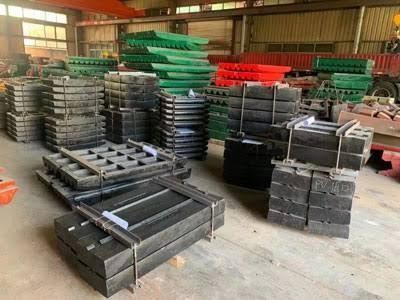Spare parts and wear protectors are available in our stocks.
Quick Access +905426661111
A crusher is an integrated system that mechanically reduces large rocks, stones, concrete, or rubble into smaller, usable aggregates. Material is first fed into a bunker or feeder. Jaw, impact or cone crushers progressively decrease particle size. Vibrating screen systems classify material by size. Finally, conveyor belts transport the product to storage, concrete plants, or asphalt facilities. Crushers are widely used in road, bridge, dam, and building infrastructure, quarries, concrete and asphalt plants, mining operations, and demolition waste recycling.
What Is a Mobile Crusher, Its Purpose, Operation, and Application Areas
A mobile crusher is a transportable crushing-screening system mounted on a track or wheel chassis. Once on site, it is stabilized with hydraulic legs and connected to a power source. Jaw, cone, or impact crushers process the material, and vibrating screens sort aggregate sizes. Conveyor belts discharge the final product. These systems are deployed in mountainous, rural, or temporary sites, prefabrication yards, demolition zones, and mining pre-processing sites. Their primary advantages are quick deployment, site flexibility, and cost efficiency.
What Is a Stationary Crusher, Its Purpose, Operation, and Application Areas
A stationary crusher is a fixed, high-capacity crushing and screening facility requiring permanent infrastructure. Feed bunkers deliver raw material to primary jaw or impact crushers for coarse reduction. Secondary cone or impact crushers achieve further size reduction. Vibrating screens classify aggregates, and conveyors direct fractions to storage or transport. Stationary plants are essential in large-scale quarries, concrete and asphalt production plants, roads, bridges, dams, and ongoing mining projects. Automation, dust suppression, and washing systems enhance efficiency and environmental compliance.
Differences Between Stationary and Mobile Crushers
Stationary crushers are designed for permanent installation, high throughput, and automation, but involve higher initial investment and longer setup. Mobile crushers offer transportability, quick setup, and flexibility. However, they have lower capacity and modular automation. Stationary systems are optimal for long-term, large-scale projects, while mobile systems serve short-term or site-variable operations.
What Is a Hard Stone Crushing–Screening Plant, Its Purpose, Operation, and Application Areas
A hard stone crushing-screening plant processes high-strength, abrasive rock types like granite, basalt, or quartzite. Material is fed into a primary jaw crusher for coarse breaking. Then, high-pressure cone crushers or high-energy impact crushers refine particle size. Vibrating screens separate aggregates into graded fractions. Conveyor belts transfer fractions to storage. These plants supply durable aggregates for heavy-duty road foundation, railway ballast, dam infrastructure, high-strength concrete, and specialized industrial purposes. Hard stone aggregates are ideal for projects requiring high wear resistance and longevity.
 English
English
 Le français
Le français
 Türkçe
Türkçe
